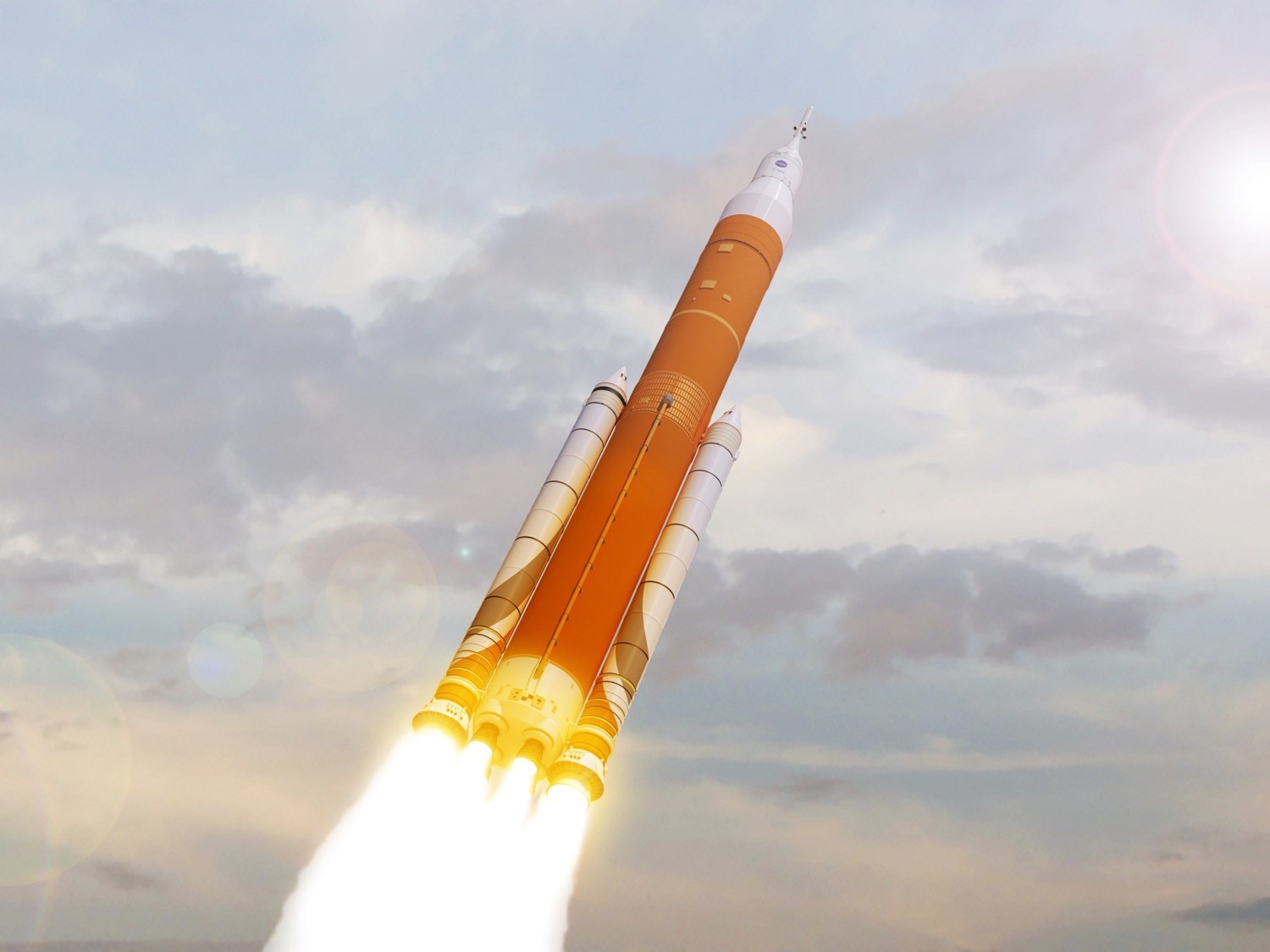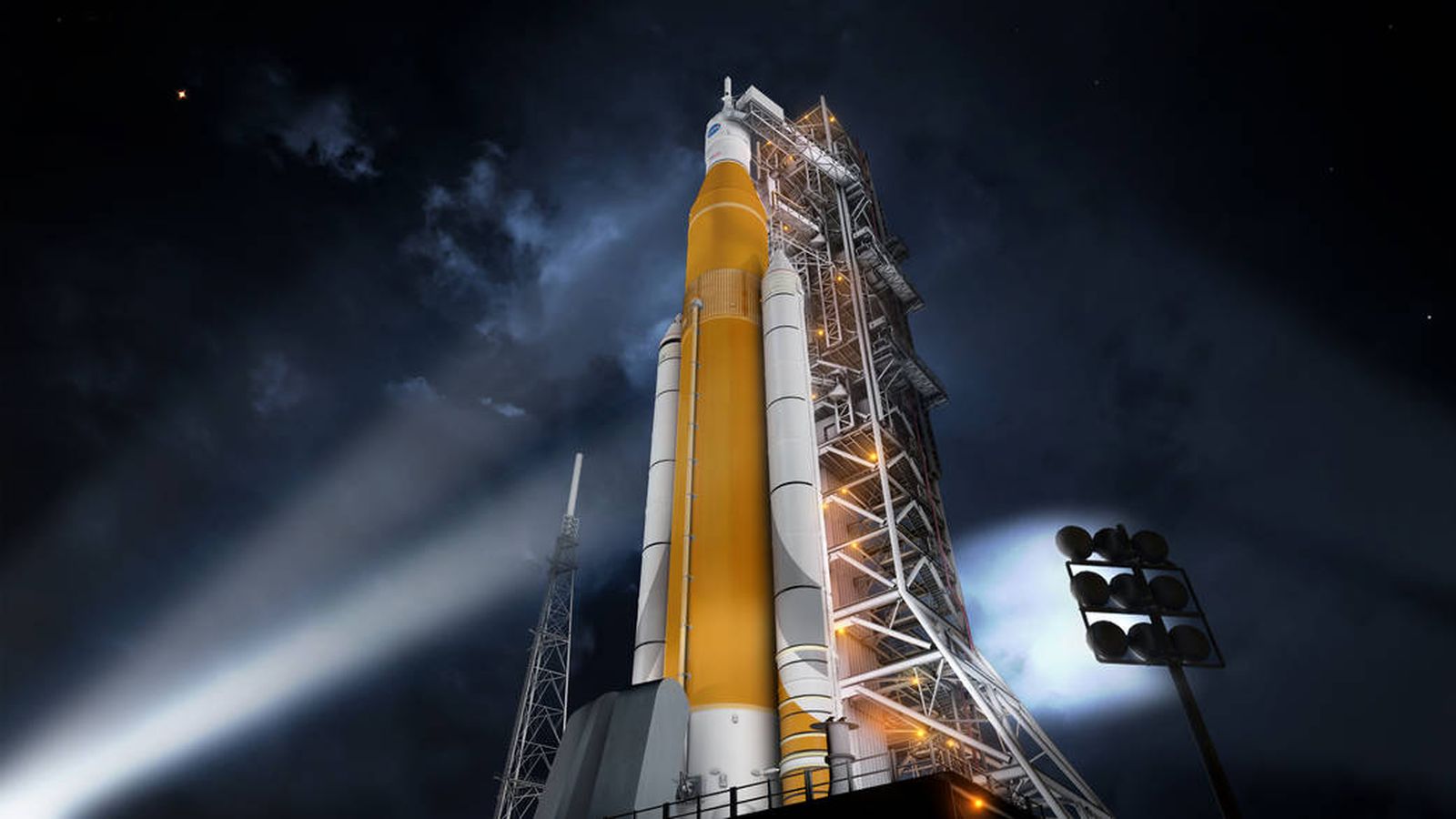NASA's extra heavy booster will cost at least $ 500 million, and its launch will be postponed for another year

Heavy launch vehicles are already the prerogative of not only government organizations, various private companies are currently working on their creation, including SpaceX, Blue Origin, Lockheed Martin and Boeing. Experts believe that this should positively affect the acceleration of the development of astronautics. Competition in the development of near and far space can lead to the fact that near-Earth space will be mastered much more actively than before. Cosmonautics is also trying to promote NASA. The agency has extensive plans for the next few years.
Do not put a spoke in the wheels of this industry and the new US President Donald Trump. He signed documents providing funds for various NASA projects, plus asked for faster development of some projects. Among other such projects, Trump mentioned the SLS, a heavy launch vehicle on which NASA places significant hopes. In particular, the US president asked to analyze the possibility of the first launch of a rocket with people on board .
Not so long ago, the agency said that in order to carry out a new plan, a number of important elements must be added to the rocket design. This is, above all, a life support system for astronauts. Both the launch vehicle itself and the Orion capsule would have to be re-equipped. Life support systems allow astronauts not only to survive during the flight, but also to feel in relative comfort. Of course, if NASA nevertheless decided to launch SLS on the first flight with people on board, the probability of a successful take-off and landing should be much higher than in the case of an automatic flight, blunders here are unacceptable.
')
Last Friday, the agency’s management reported that the flight variant with people on board was carefully analyzed. As it turned out, to implement this option, the agency would have to increase the budget by an amount from $ 600 to $ 900 million. This is very much, plus such an increase in budget could hinder both the current short-term and long-term plans of NASA. According to the statement of the head of the manned programs agency, William Gerstenmeyer, the agency is now only at the beginning of a long journey and would like to be sure that the plans are being implemented as it should. “We agree with the Court of Accounts that supporting the rocket launch plan in 2018 is not a task that should be performed at any cost, so now we are in the process of choosing a new date for 2019,” said William Gerstenmeyer.
The implementation project for the SLS launch vehicle was approved in 2010. Then the documents opening the way for the implementation of plans into reality were signed by the previous US President Barack Obama. After the approval of the previously prepared budget, NASA engineers began to develop. In its course, it turned out that the initial budget was greatly underestimated and it needed to be increased. Senators supporting NASA first said that the agency and its project would have no problems with money. But then a number of politicians left their posts and the agency was left without the support that it received the last few years.
Now NASA has reported not only that the first flight will take place without people, but also that it will be postponed - once again. At various times, the agency announced that it was going to launch SLS no later than September 2016. Then the date was moved to 2017, a little later we were talking about November 2018. But now everything has changed again. NASA says that the launch will not take place before 2019, and even this is not final, the tests can be postponed to a later date.
According to Gerstenmeyer, the problem of postponement is that the process of creating a rocket is very complex. Now NASA is launching new types of technological processes that are needed to create various elements of the rocket. And delays are due to the fact that the technology has not yet been run.

In addition, the problem adds and tornadoes that damaged one of the technological sites of NASA in Louisiana. "They (the developers, - ed.) Are still assessing the damage that will cost an additional two months of work," said NASA's ASAP committee member Donald P. McErlean. There is also the problem of detecting certain "anomalies" during the interaction of the fuel with the insulating layer. The combination of all these factors leads to constant transfers.
At the moment, it is already clear that all the deadlines that have been announced earlier have been violated. To some extent, the fact that the first flight of the SLS will be carried out automatically, without astronauts on board, is good, since the safety of people must be put in charge angle. Another positive thing is that the work on the creation of SLS continues, they are not stopped, NASA receives money from the budget. So the delay, although it is significant, can hardly be called critical - the project is gradually being implemented.
True, we should not forget that private companies, including SpaceX and Blue Origin, are also working on creating their own heavy launch vehicles. If they manage to build their own “space transport workers” faster than NASA, then the question arises of the advisability of continuing work under the state program. All these billions of dollars and tens of thousands of man-hours can be wasted. Plus, according to the calculations of NASA "competitors", launching their missiles will be much cheaper than launching SLS.
Another issue is the operation of the SLS. According to some experts, this rocket is created with a goal that is gradually becoming more and more elusive, since all the same SpaceX and Blue Origin create a much less expensive and more practical "transport". Here it is already difficult to say something definitely, since no one has a heavy booster yet, and all that remains is to wait for it to appear.
Source: https://habr.com/ru/post/403877/
All Articles